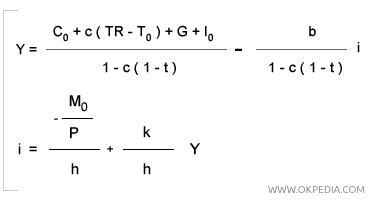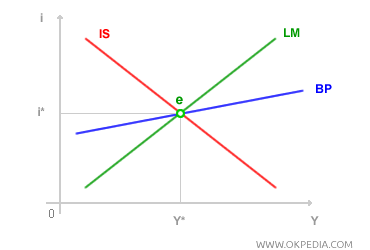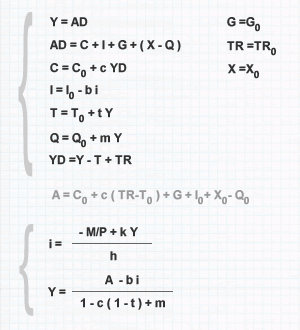Macroeconomic Equilibrium
Macroeconomic equilibrium refers to a state where all markets in the economy are balanced. In economic theory, it typically describes the equilibrium within the IS-LM model, where both the goods market and the money market reach equilibrium simultaneously. The equilibrium conditions for these two markets are expressed by the following equations:

The graphical representation of macroeconomic equilibrium can be illustrated on a Cartesian plane, with the interest rate (i) on the vertical axis and income (Y) on the horizontal axis. These two variables (i, Y) are present in both equilibrium equations of the IS-LM model. The graph is shown below:

The LM curve represents the points where the money market is in equilibrium—these are the combinations of the interest rate (i) and income (Y) that balance the demand for money with the supply of money. Meanwhile, the IS curve represents the equilibrium in the goods market, where income and aggregate demand are equal. The intersection of the LM and IS curves marks the point where both markets are simultaneously in equilibrium, representing the macroeconomic equilibrium. In an open economy, this equilibrium is determined by the intersection of the IS and LM curves (internal equilibrium) along with the BP curve (external equilibrium).

In an open economy, macroeconomic equilibrium, as described by the open economy IS-LM model, is achieved at the combination of the interest rate (i) and income (Y) that brings balance to the goods market (IS curve), the money market (LM curve), and the balance of payments (BP curve). Points along the BP curve represent combinations of income and interest rates that maintain a balanced balance of payments (external equilibrium).

